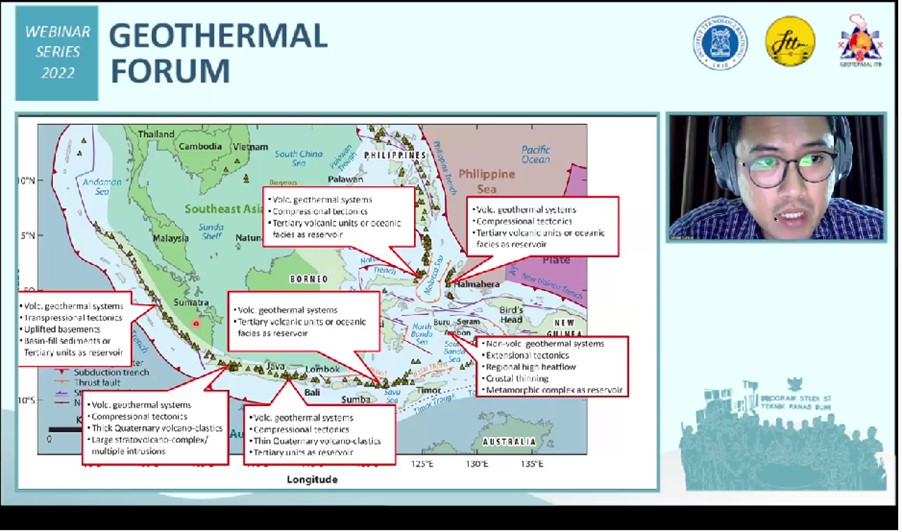Magmatism and Subduction in Indonesia: Uncompleted Pieces

BANDUNG, itb.ac.id – Faculty of Earth Sciences and Technology (FITB) Institut Teknologi Bandung (ITB) held a guest lecture titled "Magmatism and Subduction: Some Issues from Indonesia", Thursday (14/10/2021). The lecture that was held virtually presented Prof. Robert Hall from the Royal Holloway University of London.
The main topic that was presented by Prof. Robert Hall is the geological activities of magmatism and subduction in Indonesia. Before he began, he said that he would not deliver a comprehensive explanation about the issues, but rather an introduction to some thoughts regarding the subduction phenomenon.
"On the Indonesia seismic level distribution map, one thing that needs further attention is most of the seismic activities are located at the edge of the tectonic plate," he said. Based on that fact, he said, Kalimantan is one of Indonesia's islands that has a low seismic reactivity risk.
Basic of Seismic Tomography Modeling
A tectonic plate reconstruction model of the last 45-million-year earth's geological activity was developed to predict the profile and the mechanic of subductions. These profiles of subductions are 'recorded' in the Earth's mantle, so a method called seismic tomography modeling was carried out to create imaging of the Earth's mantle structures.
Tomogram itself is a blurred image seismic wave velocity deviation from its average velocity. The color on the tomogram represents the percentage of velocity anomaly, varying from 6 km/s in the crust to a speed of 13 km/s at the depths of up to 3000 kilometers.
The blue color in the tomogram result usually is used to show lower temperature while the red color is for higher temperature. "With the tomogram results that we get at various depths, we can now predict the structures of earth crust which will then be interpreted in the form of tectonic reconstructions."
Subduction Processes
Based on scientific literature, a concept that is believed among others is that initiating a new subduction zone is very difficult and cannot be determined through direct observation. In addition, the initiation of subduction can only be observed in a specific location, it requires extensive knowledge of the region where the subduction may occur.
"A new subduction could develop from an existing subduction," he explained briefly. An example of this case can be observed in the Banda region, which already developed several subduction zones. Those subductions were initiated by the eastward propagation from a pre-existing subduction zone, namely the Java Trench.
Some effects of that subduction that can be observed are the difference in the slab age at the subduction zones, the difference in subduction velocity, and the presence of a floating object. This can lead to angle changes in the subducted slab, the deepening of the nearby trench, subduction erosion, and changes in the tectonic plate deflection activity.
Magmatism and Subduction
According to Prof. Robert, in the Southeast Asian countries, Cenozoic magmatism occurs because of subduction. Even so, it needs to be remembered that this magmatism may be a product of chain reactions from previous parent subduction. Prof. Robert added, "It should also be noted that some of the active subduction zones are not associated with arc magmatism, such as the Philippines Trench."
When the subduction hinge returns to its former location, the mantle wedge will be continuously filled again, so that later magmatism could occur. Meanwhile, if the hinge is stationary, then the mantle will not be filled again. This can result in magmatism being stopped even though subduction continues. In Indonesia, there are some regions that its magmatism and subduction connection haven't been fully explained, one example is the Borneo region.
Prof. Robert Hall emphasized that there are still many pieces of the puzzle regarding the effect of subduction that are currently unclear; the absence of arc volcanism, the change in the composition from Ca to K-rich, as well as some magmatism that occurs due to expansion but not related to the melting of mantle pegs. "There are still a lot of unanswered questions, so I really hope that one day there will be a student from Indonesia who solves these questions," he concluded.
Reporter: Athira Syifa P. S. (Postharvest Technology, 2019)
Translator: Favian Aldilla R (Civil Engineering, 2019)

scan for download








